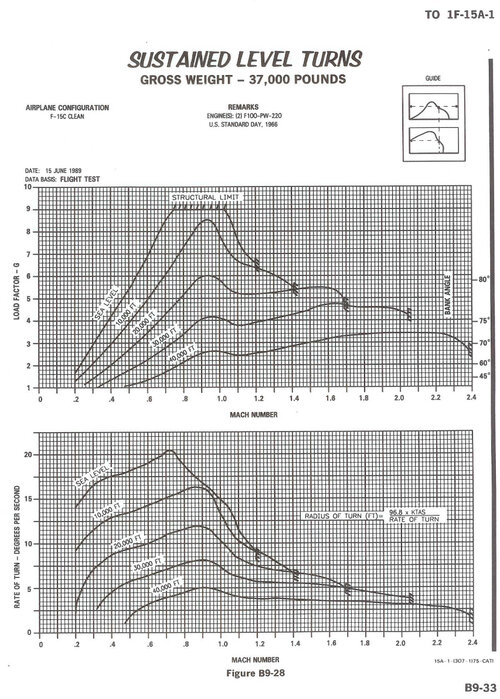You are using an out of date browser. It may not display this or other websites correctly.
You should upgrade or use an alternative browser.
You should upgrade or use an alternative browser.
An F-15C pulled 12g during a dogfight Desert Storm.
I remember years ago somewhere that an F-4 once pulled a 12G turn and it was a literally rivet popping turn, the F-4 suffered structural damage.
- Joined
- 3 June 2011
- Messages
- 17,929
- Reaction score
- 11,110
That suggests 9Gs is where you start to break things. Not that you can cruise around there to your hearts desire. Why else would they have the REQUIREMENT to have the Over Stress Warning operable over 7.33 Gs on the A-D but allows up to 9 Gs on the E with it inoperable?
- Joined
- 24 November 2008
- Messages
- 1,439
- Reaction score
- 2,042
That suggests 9Gs is where you start to break things. Not that you can cruise around there to your hearts desire. Why else would they have the REQUIREMENT to have the Over Stress Warning operable over 7.33 Gs on the A-D but allows up to 9 Gs on the E with it inoperable?
No that simply shows the structural limit to which you can pull safely is 9 Gs, not 7.33.
No idea why it's different in the F-15E manual. Maybe because it's a newer manual, maybe because of the strengthened structure, maybe because it's pretty unlikely to reach 9Gs in an F-15E.
Here's a video showing the HUD of an F-15D. At 4 minutes f.e., you can see in the lower left corner it says 50 90.
First number indicates the jet is currently pulling 5.0 Gs, the second number indicates the maximum Gs available, which are 9.0 Gs.
- Joined
- 3 June 2011
- Messages
- 17,929
- Reaction score
- 11,110
Me either. I was going off what was said back in the day. One of the "bullet points" that was promoted with the F-15E was that the E was now a 9G aircraft whereas the C was not.No that simply shows the structural limit to which you can pull safely is 9 Gs, not 7.33.
No idea why it's different in the F-15E manual. Maybe because it's a newer manual, maybe because of the strengthened structure, maybe because it's pretty unlikely to reach 9Gs in an F-15E.[/MEDIA]
- Joined
- 3 June 2011
- Messages
- 17,929
- Reaction score
- 11,110
No.wouldn’t that be the case because the c variant already has a bunch of hours so it is no longer 9g.
AGM-65 never was a Cruise missile...Was that Maverick?
BLACK_MAMBA
ACCESS: Secret
- Joined
- 17 July 2019
- Messages
- 377
- Reaction score
- 858
Considering I have yet to hear any C model Eagle driver complain about the aircraft's manuverability I don' think there is much point in this discussion. Maybe EX/QA has a gained a bit more with FBW but there is more to measureing manuverability than "how many G's" it can do. Legacy Hornets are very highly rated and they are also 7.5G aircraft with over-G available till 8.2 around I recall. At 8.3 you start bending it and a ton of inspections are required.
njiiaf
ACCESS: Confidential
- Joined
- 6 December 2021
- Messages
- 118
- Reaction score
- 341
From what I’ve heard the Strike Eagle is a bit of a pig in bfm. You pretty much get about 1-2 good turns and that’s it. Mostly to do with cfts adding a bunch of weight and drag. C-model is much more maneuverable.
Basher54321
ACCESS: Restricted
- Joined
- 15 March 2021
- Messages
- 7
- Reaction score
- 9
The F-15E airframe looks like it was built for 9G in a similar manner to the F-16A regarding its structural design. So basically the F-15E/F-16A have stronger structures than the F-15A-D in terms of G (relative to operation). This is why the F-15A-D uses OWS.Me either. I was going off what was said back in the day. One of the "bullet points" that was promoted with the F-15E was that the E was now a 9G aircraft whereas the C was not.
IIRC the Echo had a beefed up structure to enable terrain following flying. That might also have translated to a higher G loading. I wouldn't have thought high G loads would be a design goal for an aircraft that nominally was built for the interdiction role.
- Joined
- 19 February 2007
- Messages
- 1,330
- Reaction score
- 2,306
The Mudhens had beefed up structure to enhance durability while flying the Terrain-Following load spectrum. This would result in a longer airframe fatigue life (for the same spectrum) -or- the same or lower airframe fatigue life at higher G-limits. But not both. And the cost is a heavier airframe with degraded kinematics. TANSTAAFL.
Colonial-Marine
UAVs are now friend, drones are the real enemy.
- Joined
- 5 October 2009
- Messages
- 1,393
- Reaction score
- 1,170
Of course the later F-15Es and improved variants had F100-PW-229s or F110-GE-129s which would offset some of the weight increase of the heavier airframe. I'd have to imagine an earlier model F-15A-D with such engines would be a real hot rod to fly.
- Joined
- 15 January 2021
- Messages
- 341
- Reaction score
- 1,168
F-15E+ has the common engine bay that will accommodate either F100 or F110. The F100-229 is the only IPE engine that would have fit in the F-15A-D. Never done, as far as I know, unless it was a one off at Edwards as part of the -229 qualification. There was a an early EAFB F-16B with -229 that had eye watering performance.Of course the later F-15Es and improved variants had F100-PW-229s or F110-GE-129s which would offset some of the weight increase of the heavier airframe. I'd have to imagine an earlier model F-15A-D with such engines would be a real hot rod to fly.
- Joined
- 15 January 2021
- Messages
- 341
- Reaction score
- 1,168
The F-15E is a “pig” with CFTs and external tanks/weapons. The E without CFT with -229s would be likely comparable to the EX with -129, not counting any advantages the digital flight controls bring to the EX.
F-2
ACCESS: Top Secret
- Joined
- 22 May 2020
- Messages
- 802
- Reaction score
- 1,522
Yea!The F-15E is a “pig” with CFTs and external tanks/weapons. The E without CFT with -229s would be likely comparable to the EX with -129, not counting any advantages the digital flight controls bring to the EX.
I hear though the digital flight controls really help with slow speed mobility for what it’s worth
If only
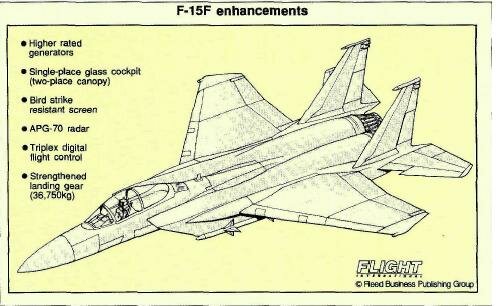
The F100-229 is the only IPE engine that would have fit in the F-15A-D. Never done, as far as I know, unless it was a one off at Edwards as part of the -229 qualification.
Here she is, F-15A with -229 engines.
Must have been fun.
Attachments
RavenOne
ACCESS: Top Secret
- Joined
- 18 June 2008
- Messages
- 975
- Reaction score
- 2,522
After seeing the F-15QA going through my neck of the woods RAF Mildenhall en route to deliver to Doha, in the last couple of years, it was great to see the F-15QA in its proper QEAF roundels and perform at Dubai Air Show this week. I also attended the F-15EX briefing at the Boeing booth so here are my photos below.
Interesting enough F-15EX is being offered to Poland...











cheers
Interesting enough F-15EX is being offered to Poland...

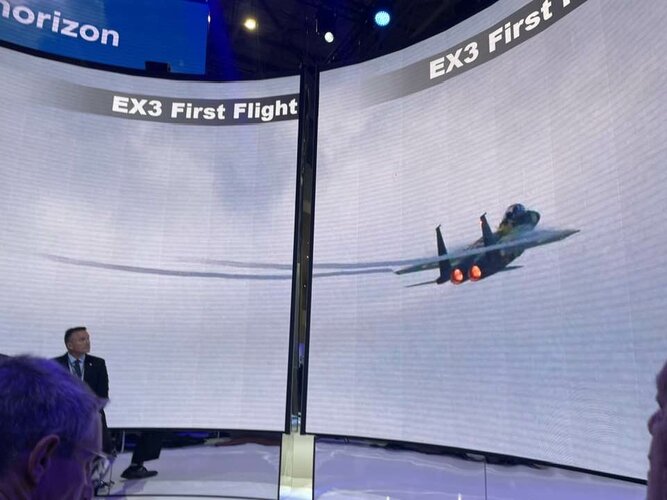
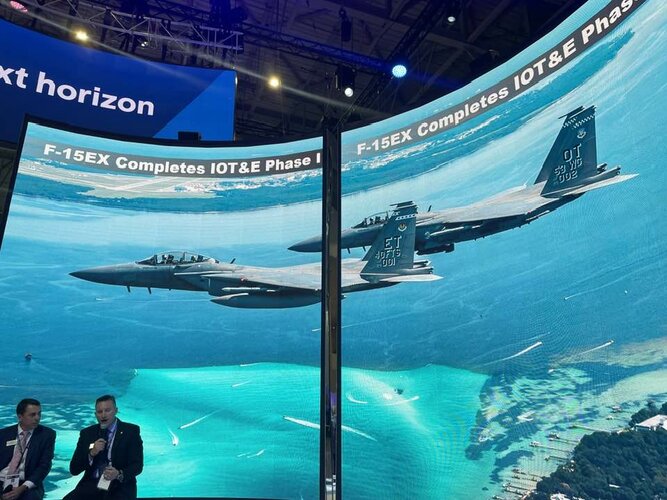

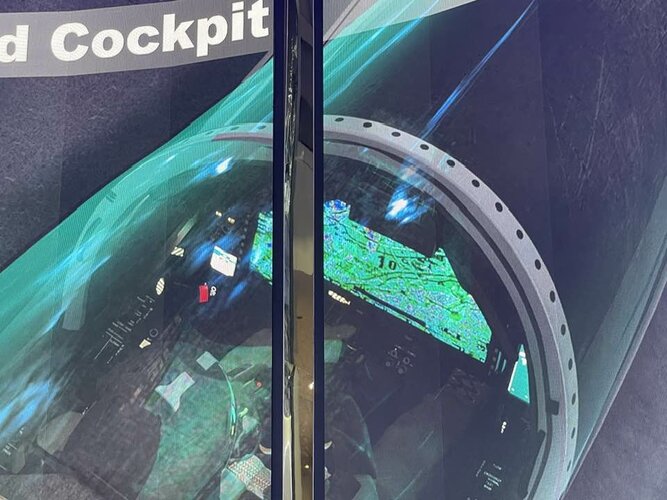
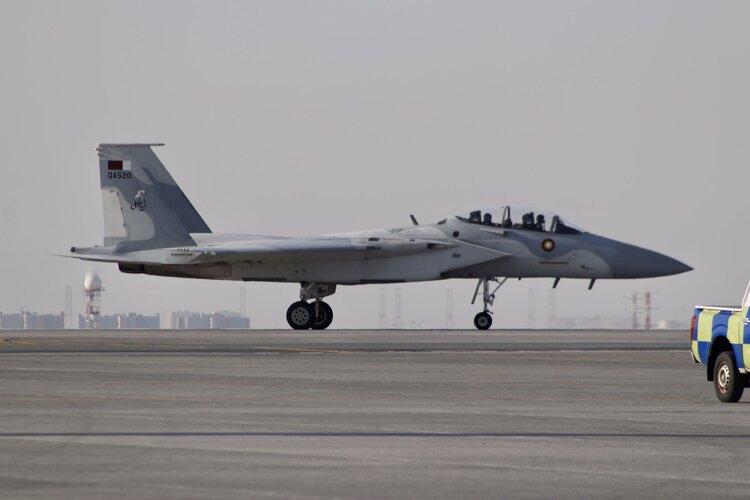
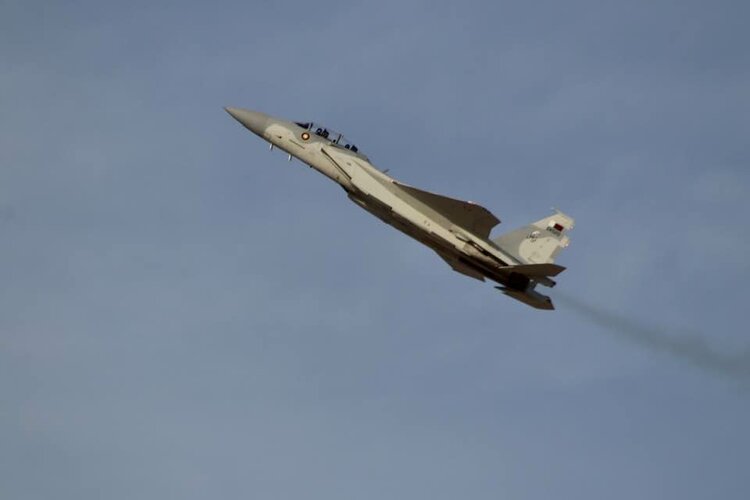
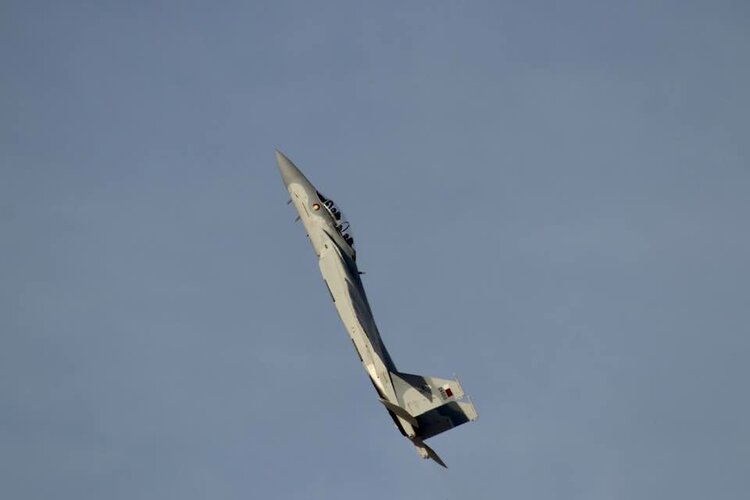
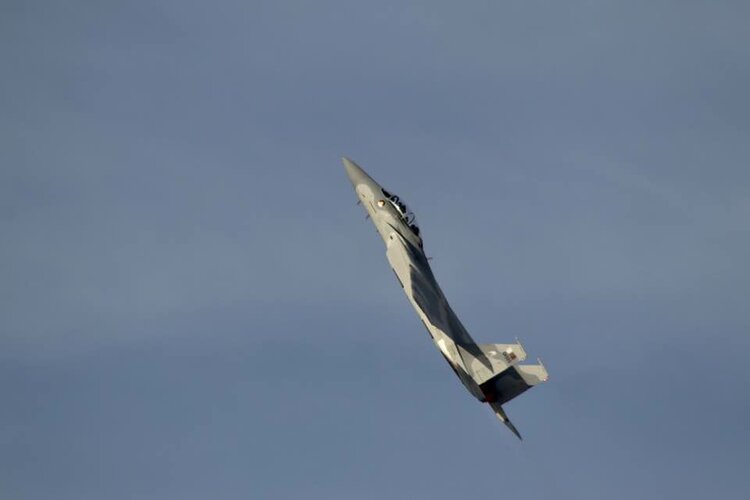
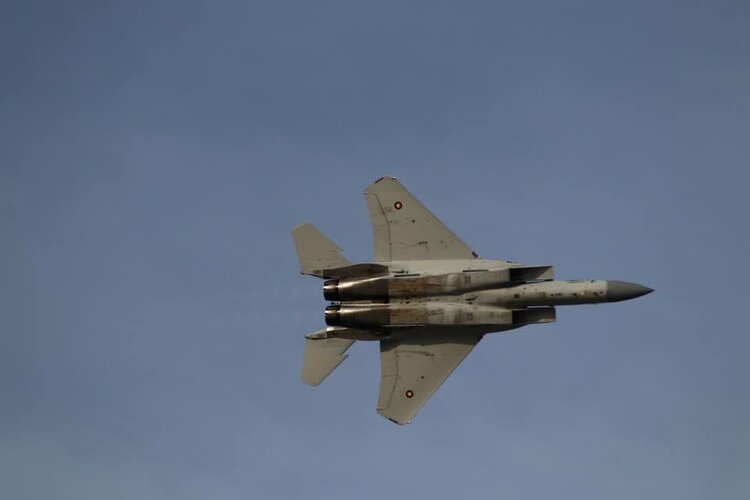
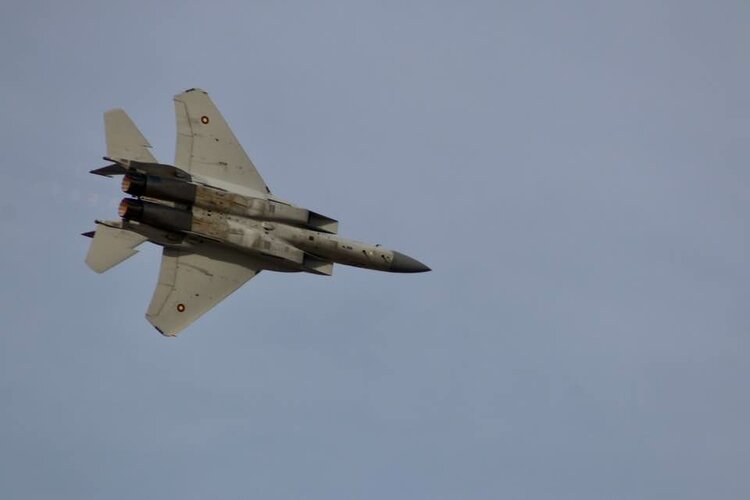
cheers
Scott Kenny
ACCESS: Above Top Secret
- Joined
- 15 May 2023
- Messages
- 9,159
- Reaction score
- 10,197
Read the notes on that sheet, too.I trust you know what "Overload" means? If it was a 9G aircraft it wouldn't need a system to tell the pilot they overloaded the aircraft when they got above 7.5g.
Same sheet from an F-15E. (Overload Warning System also inoperable.)
View attachment 711764
+9 gees without CFTs.
+~8.25 gees with CFTs but no weapons on CFTs.
+7.5 gees with CFTs with weapons on them (usual flying configuration)
+~4.1 gees at max gross weight without CFTs (not sure how you'd get to 80klbs that way, but the engineers did draw the line all the way out)
+~3.9 gees at max gross weight with CFTs but no weapons (again, not sure how you'd get to 80klbs without weapons)
+3.75gees at max gross weight with CFTs with weapons on them.
-3 gees while under Mach 1 without CFTs
-2 gees while over Mach 1 without CFTs, or while under 600knots with clean CFTs, or while under 500(?) knots with armed CFTs.
-1 gee while over 600 knots with CFTs
- Joined
- 15 January 2021
- Messages
- 341
- Reaction score
- 1,168
Yep, that would be the Edwards -229 qualification vehicle. The only thing I don’t know is if both engines were -229s, or if they were split between a -220 and a -229, to keep a “known” engine on one side.Here she is, F-15A with -229 engines.
Must have been fun.
Scott Kenny
ACCESS: Above Top Secret
- Joined
- 15 May 2023
- Messages
- 9,159
- Reaction score
- 10,197
I'd bet that the early flight tests were single -229, then once people were confident that the engine wasn't going to fail in flight they went to a pair of -229s.Yep, that would be the Edwards -229 qualification vehicle. The only thing I don’t know is if both engines were -229s, or if they were split between a -220 and a -229, to keep a “known” engine on one side.
Yep, that would be the Edwards -229 qualification vehicle. The only thing I don’t know is if both engines were -229s, or if they were split between a -220 and a -229, to keep a “known” engine on one side.
Wouldn't two different engines be difficult to handle? I thought the use of asymmetric thrust is prohibited in the F-15, at least in the US*. Then again, different rules may apply in testing.
* In a recent Japanese demo I noticed asymmetric thrust, which was a surprise.
Scott Kenny
ACCESS: Above Top Secret
- Joined
- 15 May 2023
- Messages
- 9,159
- Reaction score
- 10,197
An Eagle isn't too bad to handle with one engine out, or with one engine making much more thrust than the other, the two engines are only about 3ft from the center of the aircraft to center of thrust line and the rudders are big.Wouldn't two different engines be difficult to handle? I thought the use of asymmetric thrust is prohibited in the F-15, at least in the US*. Then again, different rules may apply in testing.
* In a recent Japanese demo I noticed asymmetric thrust, which was a surprise.
And for testing, I'd want one known good engine before I mucked with a new engine!
Yep, that would be the Edwards -229 qualification vehicle. The only thing I don’t know is if both engines were -229s, or if they were split between a -220 and a -229, to keep a “known” engine on one side.
It was indeed one -229:
Its maiden flight occurred in the spring of 1988 at Edwards Air Force Base, California, when it flew in the left engine bay of an F-15 Eagle. Several months later, the engine made its first flight in an F-16 Fighting Falcon.
F100 now on display at Arnold AFB Engine Test Facility
A monument to the longstanding relationship between Arnold Engineering Development Complex and the F100 engine now stands outside of the Engine Test Facility at Arnold Air Force Base.A static display
www.hill.af.mil
Always nice to have an F-15 at your disposal.
Scott Kenny
ACCESS: Above Top Secret
- Joined
- 15 May 2023
- Messages
- 9,159
- Reaction score
- 10,197
That F-16 with the -229 must have been way too much fun...It was indeed one -229:

F100 now on display at Arnold AFB Engine Test Facility
A monument to the longstanding relationship between Arnold Engineering Development Complex and the F100 engine now stands outside of the Engine Test Facility at Arnold Air Force Base.A static displaywww.hill.af.mil
Always nice to have an F-15 at your disposal.
Can you imagine an F16A with that engine? (Or even scarier, with a high end F110?)
Can you imagine an F16A with that engine? (Or even scarier, with a high end F110?)
What about an F119? Assuming it's compatible with the F-16's engine bay.
Scott Kenny
ACCESS: Above Top Secret
- Joined
- 15 May 2023
- Messages
- 9,159
- Reaction score
- 10,197
Might be good for supercruising, but a high end F110 like the EPE (CFM56-7 core, F118 fan blisks) is making almost as much thrust.What about an F119? Assuming it's compatible with the F-16's engine bay.
Scott Kenny
ACCESS: Above Top Secret
- Joined
- 15 May 2023
- Messages
- 9,159
- Reaction score
- 10,197
The F119 generates 35,000Lb thrust at full reheat though.
36-37klbs thrust for the F110EPE as described. 40klbs if they added some adaptive cycle fun from the YF120.
F-2
ACCESS: Top Secret
- Joined
- 22 May 2020
- Messages
- 802
- Reaction score
- 1,522
The 40k is actually referring to a larger diameter engine that was a low cost JSF from ge in addition to some YF120 based proposals. I’ve seen mention of the F110-ge-134 possibility getting adaptive cycle features but to date have yet to find any details.
36-37klbs thrust for the F110EPE as described. 40klbs if they added some adaptive cycle fun from the YF120.
- Joined
- 15 January 2021
- Messages
- 341
- Reaction score
- 1,168
At sea level, it was still accelerating at 800 kts pulling 7Gs at Max power. Couldn’t pull any more Gs because the F-16B did not have the front mount doubler needed to support the heavier-229 at 9Gs.That F-16 with the -229 must have been way too much fun...
Can you imagine an F16A with that engine? (Or even scarier, with a high end F110?)
Scott Kenny
ACCESS: Above Top Secret
- Joined
- 15 May 2023
- Messages
- 9,159
- Reaction score
- 10,197
Yowza!At sea level, it was still accelerating at 800 kts pulling 7Gs at Max power. Couldn’t pull any more Gs because the F-16B did not have the front mount doubler needed to support the heavier-229 at 9Gs.
I can only imagine just how thrilled that pilot was... bet he didn't sleep for a week after that!
aonestudio
I really should change my personal text
- Joined
- 11 March 2018
- Messages
- 2,881
- Reaction score
- 7,120
Similar threads
-
-
J
-
-
-
Poland Attack Helicopter competition between Bell and Boeing
- Started by RavenOne
- Replies: 19

